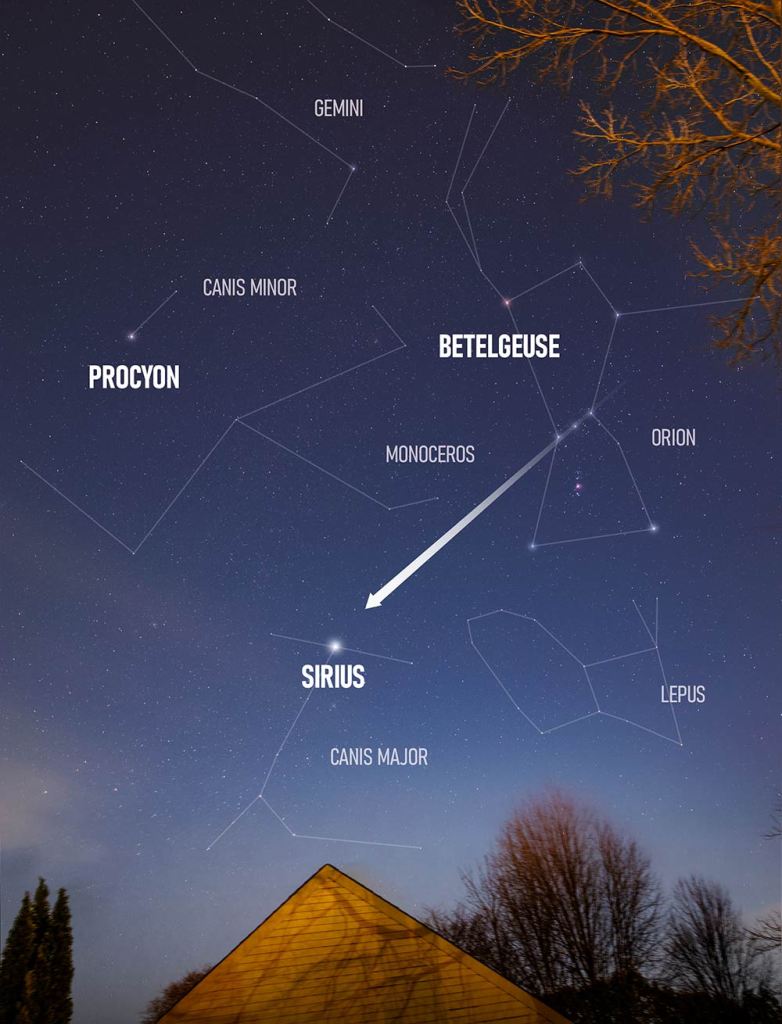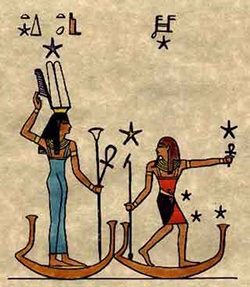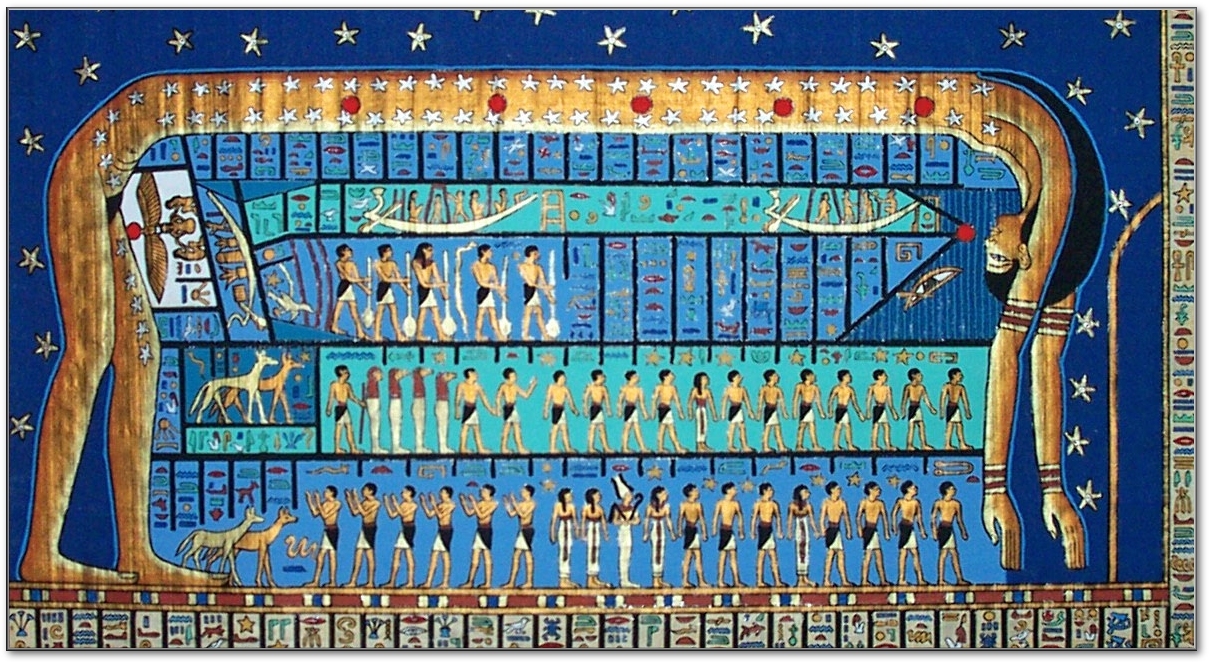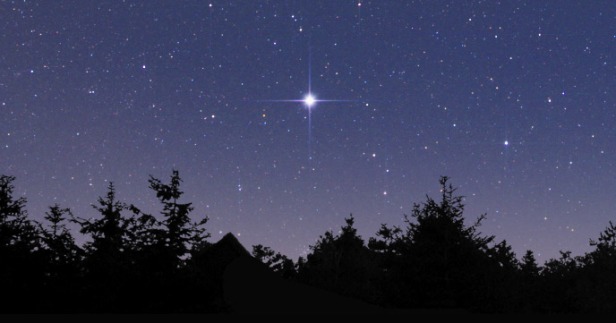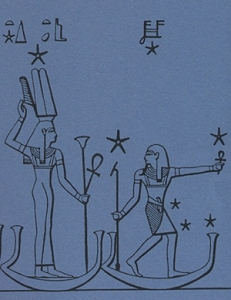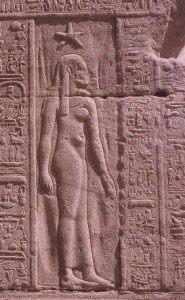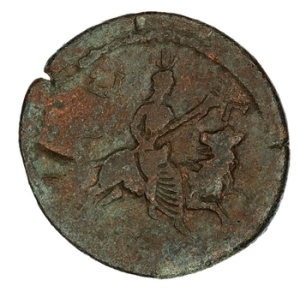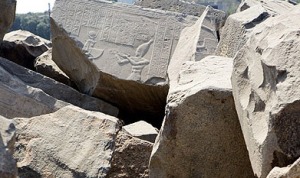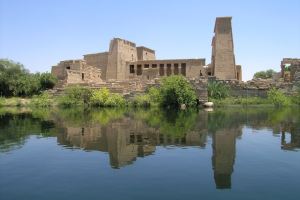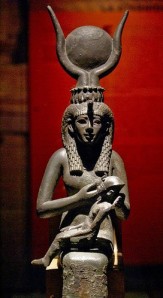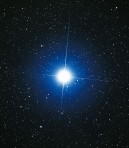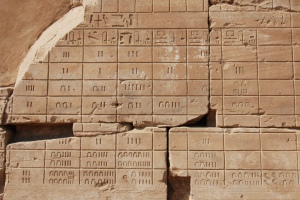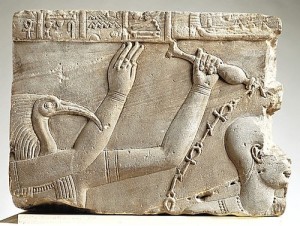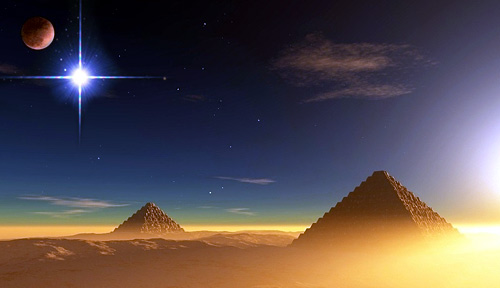Those of you of a Kemetic bent already know that the ancient Egyptian New Year began with the predawn rising of the Star of Isis, Sirius, in mid to late summer. After a long absence, this summertime rising marked both the start of the New Year and the coming of the all-important Nile flood.
But there is another time in the year that the Beautiful Star of the Beautiful Goddess is most prominent. And I would argue that it is then that She is even more glorious than during Her summer heliacal rising.
That time is right now. At our own modern New Year.
Sirius is even more breathtaking now because we can see Her illuminating the nighttime sky for much longer. In summer, we get only a brief glimpse of Her light just before dawn—and then Her starlight disappears in the greater light of the rising sun. But now, ah now, those of us in the northern hemisphere can bathe in Her starlight all night long. (In the southern hemisphere, Sirius is best viewed in summer.)
But there’s yet another wonderful Mystery. At midnight tonight—as we ring in the New Year—Sirius reaches its highest point in the night sky. She will be high overhead at midnight on New Year’s Eve. And so we are completely justified in claiming Sirius as our star of the New Year, too, just as She was for the ancient Egyptians.
I utterly and completely love this fact.
Of course, Sirius continues to dominate the night sky throughout the winter months, so tonight isn’t your only opportunity to admire Her. As a devotee of Isis, I take it as a sacred duty to spend at least some time during the winter observing the beauty of the star of the Goddess in the night sky and offering Her the praise of my heart.
If you’d like to join me, look to the east-southeast after sunset. See that diamond-like star near the horizon? That’s Her. No other star in the belly of Nuet can match Her for brilliance (in fact, the second brightest star is only half as bright as Sirius). And of course, if you continue lifting your gaze upwards, you will see the constellation of Orion, which the Egyptians associated with Osiris, the Beloved of Isis. As the night goes on, She rises higher into the sky, until at midnight, She reaches Her highest point.
If you have access to a telescope, O please, please do use it to look at Her, especially when She is near the horizon. The Goddess flashes with green, blue, pink, and white starlight.
To acknowledge the Goddess’ ancient connection with Her star, some shrines and temples of Isis, including the small Isis temple at Ptolemaic-era Denderah, were oriented towards Sopdet, the Egyptian name of the star.
The location of Sirius in the Canis Major constellation, as well as Her ancient association with Anubis, connects Isis with canines. In a second-century aretalogy (self-statement) from Kyme in modern Turkey, Isis says of Herself, “I am She that riseth in the Dog Star.”
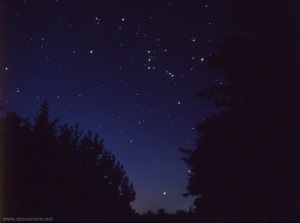
Just as Orion the hunter is inseparable from his hunting hound, so the Egyptians saw a connection between the constellation they called Sah (Orion) and the most brilliant star in the heavens, Sopdet. Sah could be identified with Osiris Himself or considered to be His Ba, or Divine manifestation, just as Sirius could be Isis’ manifestation. As Orion rises before Sirius, you can see the ancient myth of Isis searching for Her lost husband played out before you as the constellation Orion appears to move through the sky ahead of the Beautiful Star.
I hope the skies where you are are much clearer than our cloudy Portland skies. While I probably won’t be able to see Her myself tonight, that doesn’t mean She isn’t there.
She is always there. Even if we can’t always see Her.
May your New Year be prosperous, beautiful, deep, and renewing. Amma, Iset.



